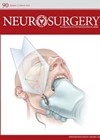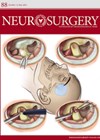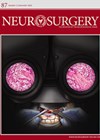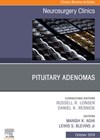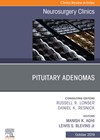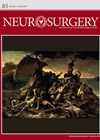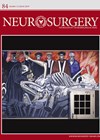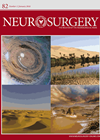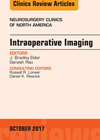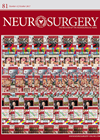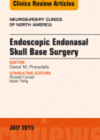
Journal Reviews
Molecular and genetic nature of skull base tumours drives management
This article reviews the molecular basis and paradigm shift in the diagnosis and management of skull base tumours. It is now known that the phenotype of meningiomas is influenced by their genotype. Endolymphatic sac tumours are observed in up to...
Are there any benefits of postoperative antibiotics after endoscopic transsphenoidal surgery for pituitary tumours?
This prospective randomised double-blind multicentre study evaluated whether postoperative antibiotics resulted in improvement in sinonasal quality of life (QoL) compared to placebo in patients undergoing endoscopic endonasal transsphenoidal pituitary surgery. A total of 461 patients were screened for the study...
Review of pituitary tumour pathology
This is an excellent review article covering the pathology of pituitary adenomas (PA) as well as rare sellar lesions like lymphocytic hypophysitis that require aggressive treatment. The authors have preserved the 2017 World Health Organization (WHO) classification of PA and...
Predictors of diabetes insipidus post-hypophysectomy
Transient diabetes insipidus (DI) after pituitary surgery is not uncommon and its diagnosis fairly obvious. Permanent DI is rare and often depends on the neurosurgeon’s experience. This retrospective study describes a large series of patients with majority undergoing endoscopic transsphenoidal...
Prolactinomas: when to operate
Prolactinomas are the most common functional pituitary adenomas, comprising 40% of all pituitary adenomas. There are consensus guidelines and several common management pathways. This article discusses the role of surgery for these patients. Following diagnosis, the goals of treatment are...
3D endoscopy in pituitary adenoma surgery
Endoscopic approach for pituitary adenoma surgery is well recognised. There has been recent refinement of 3D endoscopy technology which improves on the depth of vision offered and more compact delivery. This may improve visualisation of the critical structures involved in...
Paediatric versus adult pituitary adenomas
This retrospective study compares paediatric with adult patients undergoing pituitary adenoma surgery over a period of 26 years at a single institution. All surgeries were performed via a sublabial approach using the operating microscope. An endoscope was used occasionally for...
Recovery room cortisol to predict long-term glucocorticoid supplementation
The authors report the results of using recovery room (RR) cortisol to predict the need for long-term glucocorticoids in patients who underwent transsphenoidal surgery (TSS). They conducted a retrospective study of preoperative morning serum cortisol (MSC), RR cortisol and day...
Close monitoring of patients for delayed hyponatremia post-transsphenoidal surgery
he incidence of delayed hyponatremia is 16-28% and usually accounts for unplanned readmission of the patient within 30 days after transsphenoidal surgery. One of the surrogate measures of quality of care adopted by the government and regulatory agencies is 30-day...
Intraoperative MRI use during pituitary tumour resection
This article provides an overview of intraoperative MRI (iMRI) use in transphenoidal surgery (TSS) for pituitary tumours. Traditionally imaging of the surgical field during surgery involves intraoperative fluoroscopic imaging or neuronavigation which help to avoid injury to critical structures but...
Prioritisation of surgery for pituitary tumours
This study is based on the findings of internationally renowned skull base surgeons who convened to recommend this stratification scheme. The study authors report that incidental diagnosis of pituitary tumours during routine imaging as well as early identification of visual...
The increasingly favourable outcomes from endoscopic endonasal approaches for the management of pituitary adenomas
Historically, pituitary tumours have been surgically managed with an open, transcranial approach. Although this approach still has its merits in large intracranial adenomas, technological advancement has allowed smaller tumours to be debulked via a transseptal microscopic technique. These days, the...

